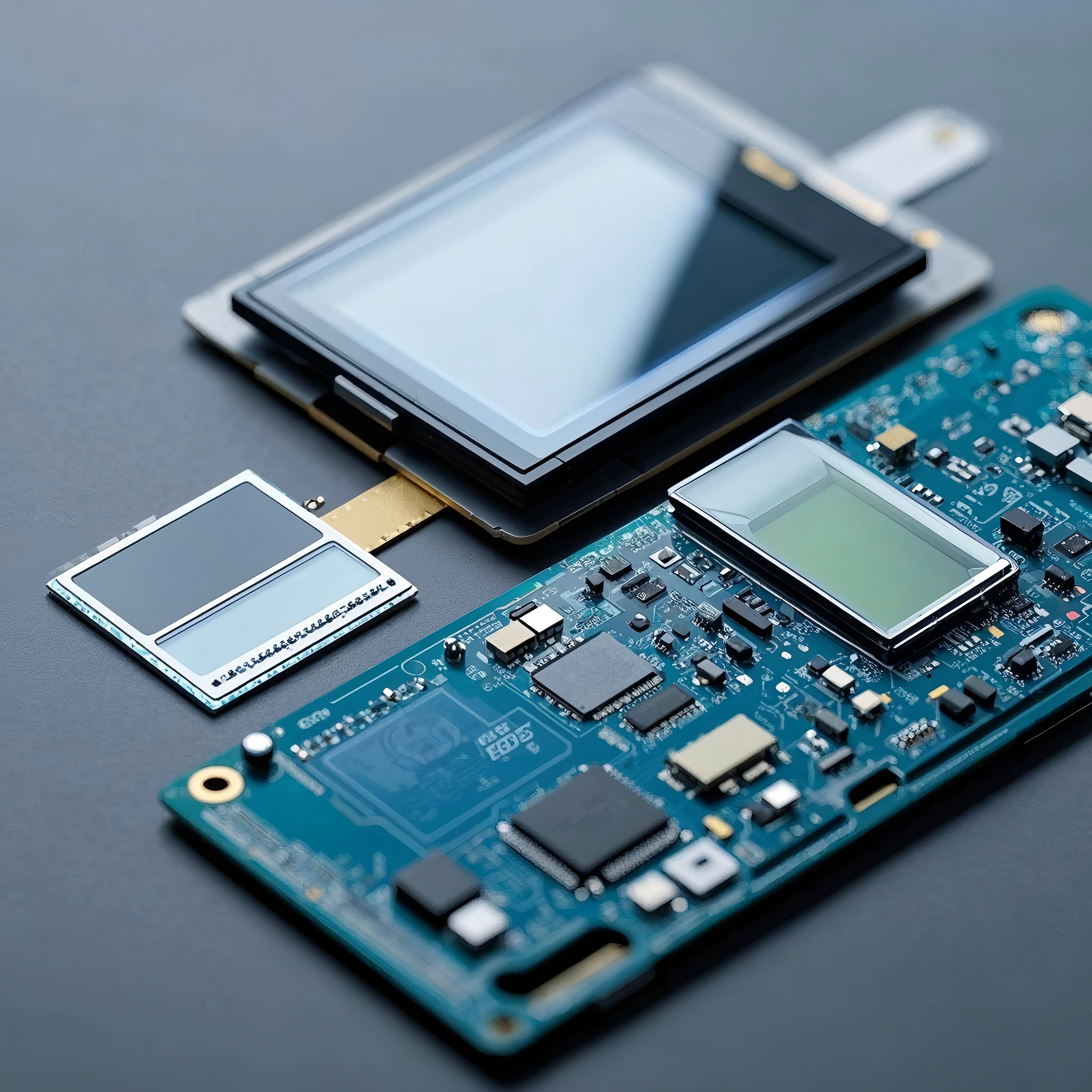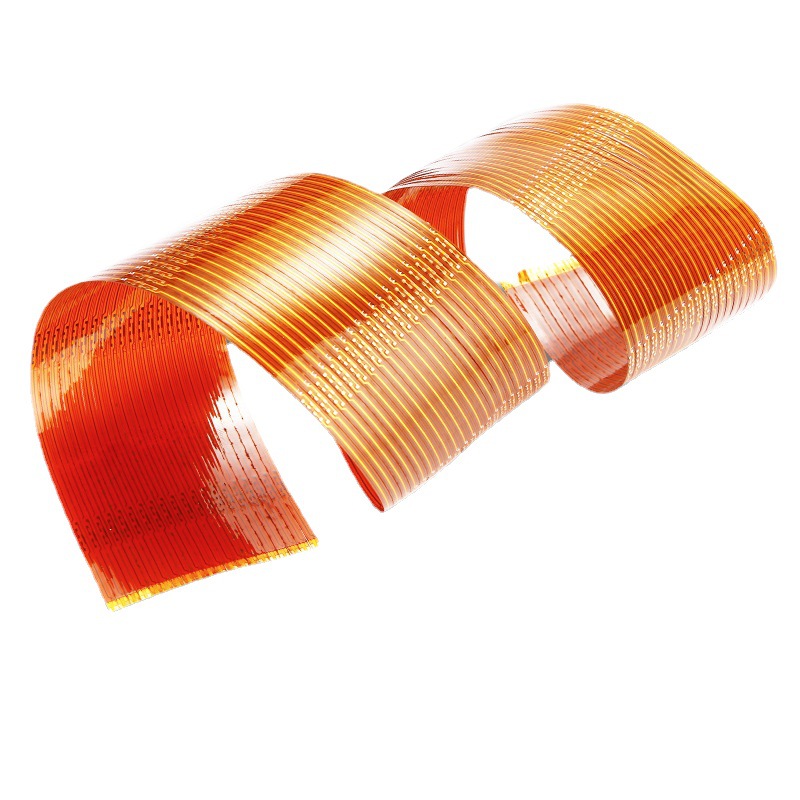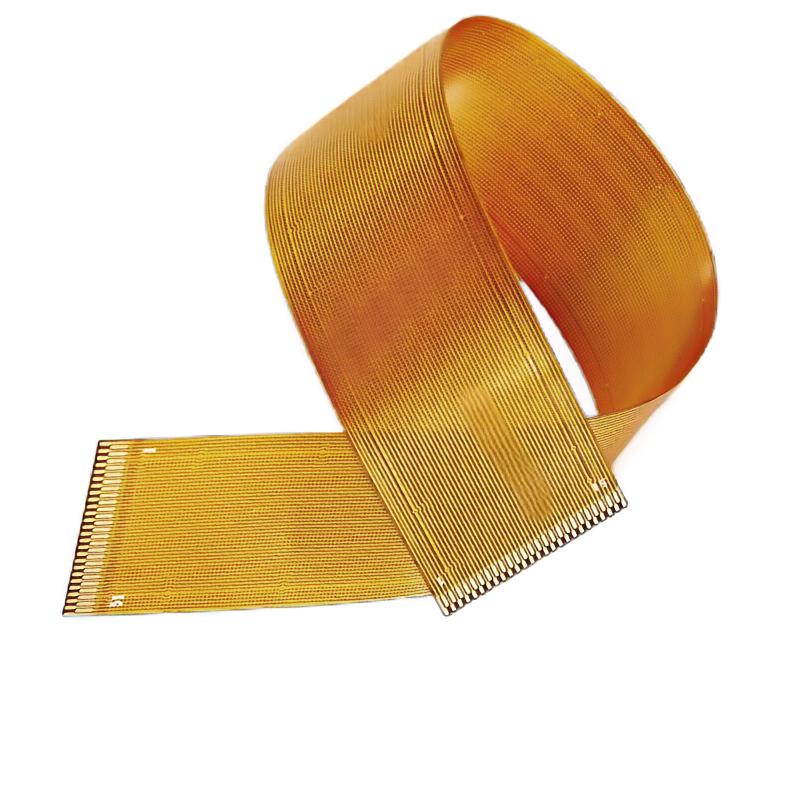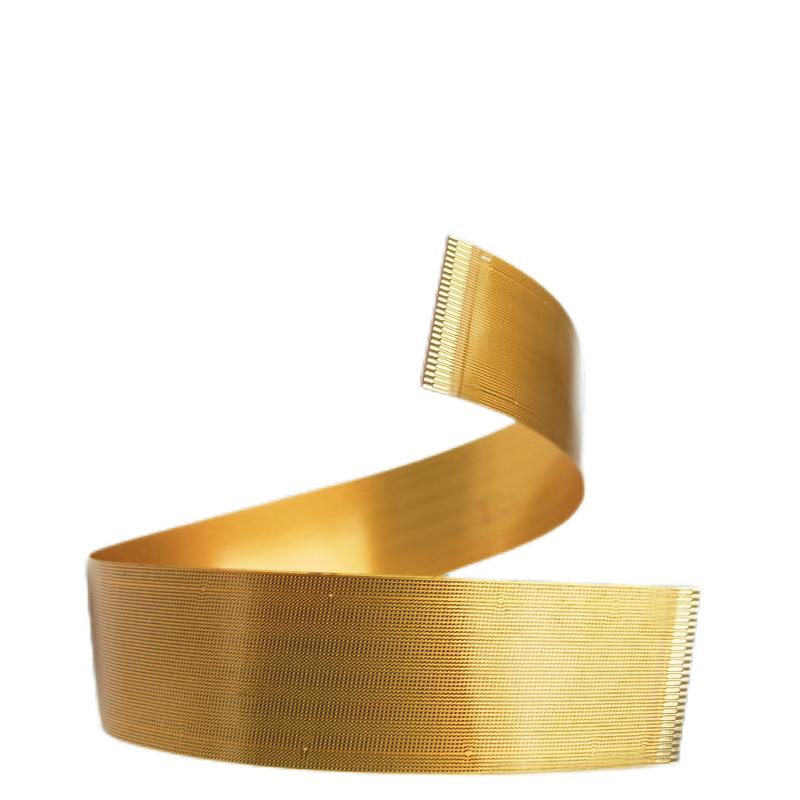Search
Key Considerations in FPC Design and Production for the Display Industry and Solutions Adopted by Companies
- Feb 19,2025
-
Share
In the fast - paced and highly competitive display industry, which prominently features Organic Light - Emitting Diode (OLED) and Liquid Crystal Display (LCD) technologies, Flexible Printed Circuits (FPCs) serve as the linchpin for seamless device functionality. FPCs are indispensable in connecting diverse components within displays, such as the OLED emissive layers or the LCD liquid crystal molecules' driving circuitry. They ensure unhindered electrical communication, which is vital for high - definition image rendering, and contribute significantly to the sleek and lightweight profiles characteristic of contemporary display devices. However, the design and production of FPCs tailored for the display sector are rife with intricate challenges that demand meticulous attention.

![]() I. Key Considerations in FPC Design and Production for the Display Industry
I. Key Considerations in FPC Design and Production for the Display Industry
A. Flexibility and Bend Radius
1. Flexibility Requirement
In applications like foldable smartphones equipped with foldable OLED displays or curved monitors with LCD panels, the displays are subject to repeated bending or folding. FPCs must be engineered to endure a substantial number of bending cycles, often in the thousands, throughout the device's lifespan without succumbing to mechanical failure. This is crucial as any breakage in the FPC can disrupt the electrical signals to critical components like the OLED's thin - film transistors (TFTs) or the LCD's polarizing filters.
2. Bend Radius Determination
The bend radius of an FPC is a critical parameter. A sub - optimal, overly small bend radius can induce cracks in the conductive traces, typically made of copper. These cracks can lead to open - circuit failures, disrupting the electrical current flow that powers the display's backlight in LCDs or drives the electroluminescent process in OLEDs. Designers need to calculate and specify an appropriate bend radius by taking into account the material properties of the FPC, including the thickness of the copper layer and the flexibility of the polyimide (PI) substrate material, which is commonly used for its excellent flexibility and high - temperature resistance.
B. Electrical Performance
1. Signal Integrity
In modern high - resolution displays, such as 4K and 8K OLED and LCD panels, high - speed data transfer is of the essence. FPCs must be designed to maintain signal integrity, minimizing signal attenuation, propagation delay, and cross - talk. For instance, in high - definition LCD displays, high - speed serial interfaces like LVDS (Low - Voltage Differential Signaling) or eDP (Embedded DisplayPort) are employed, and the FPCs need to support these high - speed data rates without degrading the signal quality. This ensures that the accurate color and grayscale information necessary for sharp image reproduction can be transmitted from the display controller to the display panel.
2. Electrical Isolation
To prevent short - circuits and electromagnetic interference between different electrical components within the display, proper electrical isolation must be ensured in FPC design. In displays with multiple power domains, such as the power supply for the OLED's anode and cathode or the different voltage levels for driving the LCD's pixel electrodes, and closely - spaced signal lines, electrical isolation becomes particularly crucial. Insulating layers in the FPC, often made of dielectric materials, play a vital role in maintaining the integrity of the electrical signals.

C. Thermal Management
1. Heat Dissipation
Displays generate heat during operation. In high - brightness OLED displays, for example, the FPCs can act as a heat transfer pathway. As the OLED emits light through the electroluminescent process, heat is inevitably produced. Designers need to consider materials with good thermal conductivity, such as thermally conductive adhesives or adding thermal vias in the FPC layout. These thermal vias can effectively transfer heat away from the heat - generating components, like the OLED's driver ICs, to prevent overheating, which can lead to color shift and reduced lifespan in OLEDs.
2. Thermal Expansion Compatibility
Different materials in the display system, including the FPC and the display panel (such as the glass substrate in LCDs or the plastic substrate in some flexible OLEDs), have disparate coefficients of thermal expansion. Over time, these differences in thermal expansion can cause mechanical stress and delamination. The FPC material and design should be carefully chosen to minimize the impact of these thermal expansion mismatches. For example, using materials with a similar coefficient of thermal expansion to the display panel can help maintain the structural integrity of the FPC - panel connection.
D. Reliability and Durability
1. Environmental Resistance
FPCs used in displays should be resistant to environmental factors such as humidity, temperature variations, and chemicals. In outdoor displays, which are exposed to sunlight, rain, and temperature fluctuations, or in industrial - environment displays, which may be exposed to chemicals, the FPCs must be able to withstand these harsh conditions without performance degradation. Moisture ingress, for example, can corrode the conductive traces in the FPC, leading to electrical failures.
2. Long - term Reliability
Displays are expected to have a long service life, often spanning several years. FPCs need to maintain their electrical and mechanical properties over an extended period. This necessitates proper material selection, such as using high - quality copper for the conductive layer and reliable insulating materials, along with well - defined manufacturing processes and stringent quality control measures. Regular mechanical testing, like bend - cycle testing, and electrical testing are essential to ensure that the FPCs can meet the long - term reliability requirements.

II. Solutions Adopted by Shenzhen Huaruixin Electronics Co., Ltd. and Similar Enterprises
A. Material Selection and Optimization
1. Advanced Substrate Materials
Shenzhen Huaruixin Electronics Co., Ltd. frequently selects high - performance polyimide (PI) as the substrate material for FPCs in display applications. PI offers a unique combination of excellent flexibility, high - temperature resistance, and good electrical insulation properties. This makes it ideal for withstanding the operational conditions in displays, especially in high - temperature environments during the manufacturing process or when the display is in use. The company also actively explores new composite materials, such as PI - based materials with enhanced thermal conductivity, to further enhance the performance of FPCs, particularly in terms of heat dissipation.
2. Conductive Material Improvements
For the conductive layer, high - purity copper is used to ensure low resistance and superior electrical conductivity. This is essential for efficient transmission of electrical signals in the display. Some companies, including Shenzhen Huaruixin Electronics Co., Ltd., also apply surface treatments to the copper layer, such as nickel - gold plating. This plating not only improves corrosion resistance but also enhances solderability, which is crucial for the long - term reliability of FPCs in display applications. A well - soldered connection between the FPC and other components in the display, like the display driver IC, is vital for stable electrical performance.
B. Design - for - Manufacturability (DFM)
1. Streamlined Design
Enterprises place a strong emphasis on simplifying the FPC design to enhance manufacturability. This involves reducing the number of layers whenever possible, optimizing the layout of vias and traces, and ensuring consistent line widths and spaces. A simplified design reduces the complexity of the manufacturing process, thereby minimizing the probability of manufacturing defects. For example, reducing the number of layers can simplify the lamination process, which is a critical step in FPC manufacturing.
2. Simulation and Analysis
Before mass production, companies like Shenzhen Huaruixin Electronics Co., Ltd. leverage simulation tools to analyze the electrical, thermal, and mechanical performance of FPC designs. Electrical simulation software, such as HFSS (High - Frequency Structure Simulator), can predict signal integrity issues, while thermal analysis software can help optimize heat - dissipation designs. By conducting these simulations early in the development cycle, designers can identify and address potential problems, saving both time and cost.
C. Manufacturing Process Control
1. Precision Manufacturing Equipment
High - precision manufacturing equipment is essential for producing high - quality FPCs. Many enterprises invest in advanced lithography, etching, and bonding equipment. For example, laser - based lithography can achieve higher - resolution traces, which is highly beneficial for high - density FPC designs in modern displays. This high - resolution capability allows for more precise placement of components and narrower signal traces, enabling better performance in terms of signal integrity and space utilization.
2. Quality Control and Testing
Stringent quality control measures are implemented throughout the manufacturing process. This includes in - process inspections, such as visual inspection of the FPC surface for any defects like scratches, voids, or misaligned traces, and final product testing. Electrical testing is carried out to ensure that the FPC meets the required electrical performance standards, such as resistance, capacitance, and impedance specifications. Mechanical testing, such as bend - cycle testing, is also conducted to verify the durability of the FPC, ensuring that it can withstand the expected mechanical stresses during the display's lifespan.

In conclusion, the design and production of FPCs for the display industry demand careful consideration of multiple interrelated factors. Companies like Shenzhen Huaruixin Electronics Co., Ltd. are at the forefront of innovation, constantly exploring new materials, refining design methodologies, and optimizing manufacturing processes to meet the exacting requirements of the display market. This ensures the high - quality and reliable performance of FPCs in OLED, LCD, and other emerging display applications. As the display industry continues to progress, with the advent of new display technologies such as Micro - LED and quantum - dot - enhanced displays, the development of FPCs will remain integral in enabling these new display form factors and performance enhancements.

Let’s talk! We’ll provide the perfect solution for you!
-
 Huaruixin Electronics mainly produces printed circuit boards as the core business, to provide customers with one-stop solutions for FPC/PCB production, components sourcing and Assembly.
Huaruixin Electronics mainly produces printed circuit boards as the core business, to provide customers with one-stop solutions for FPC/PCB production, components sourcing and Assembly. - WHAT WE DO — PCB Design Solutions — Flex PCB Production — Components Sourcing — FPC&PCB Assembly
- PRODUCTS — Single Sided Flexible Circuits — Double Sided Flexible Circuits — Multilayer Flexible Cirucits — Rigid-Flex Circuits — FPC Assembly — PCB Assembly
- CAPABILITY — FPC Capability — Rigid-Flex Capability — PCB Capability — Assembly Capability
- Copyright © 2024 Shenzhen Huaruixin Electronics Co., Ltd. All Rights Reserved.
- Design By BONTOP


